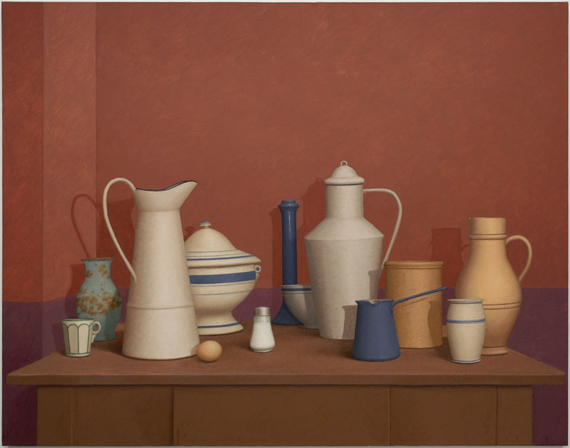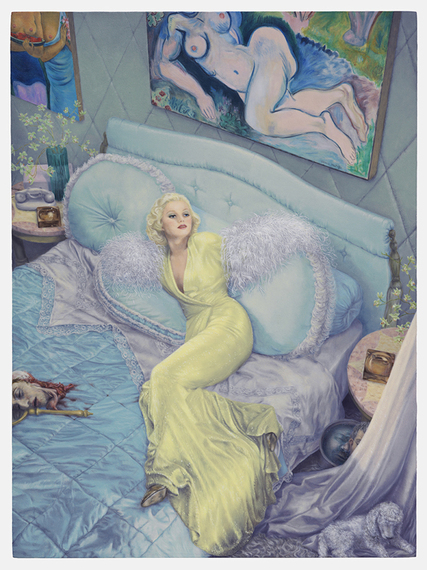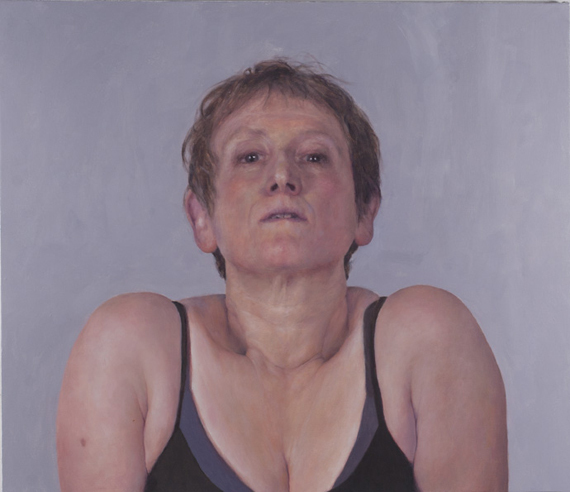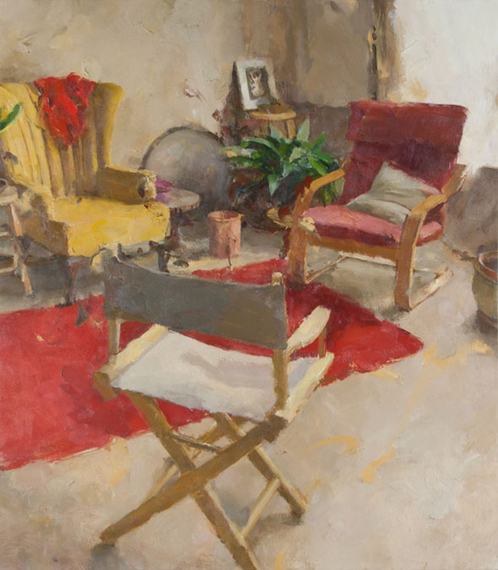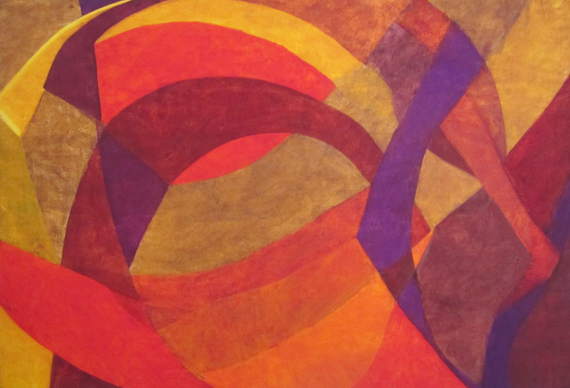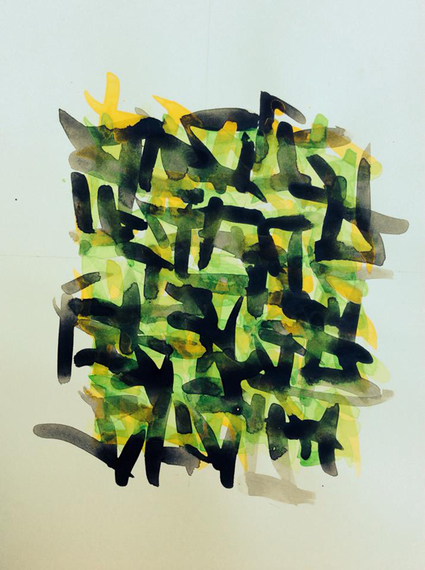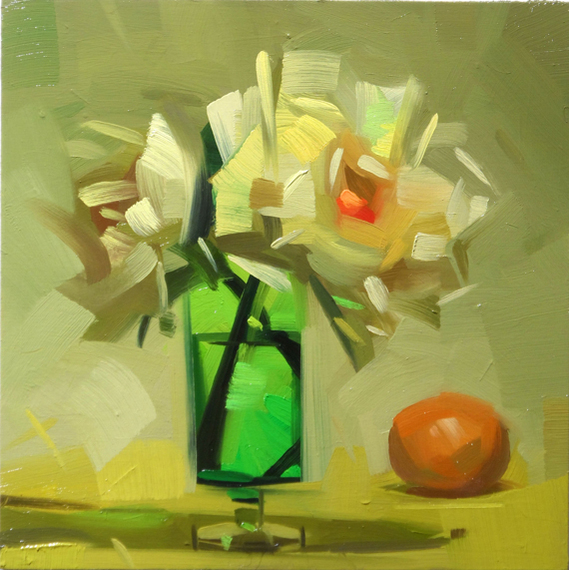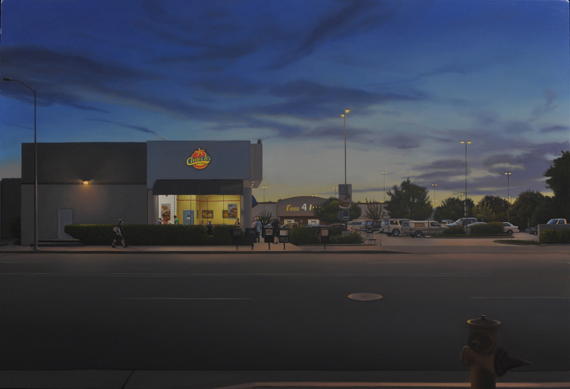William Bailey had a long and influential career as a teacher at Yale and continues to have a long and influential career as a painter. I always wanted to see a show of painters he influenced, and since that's not in my power, I asked some painters and compiled their responses and some of their work to put this together as a substitute and a way of giving thanks.
Hilary Harkness
They say good things come in threes. I'm not one who puts much stock in sayings, but when thinking about William Bailey's excellence as a teacher, I am a believer.
One: His logical, rigorous and methodical approach to painting. He took the time to clearly convey the basics.
Two: His humanity. When we had breakthroughs, he shared our joy. When we were sick, he sent get-well notes. When we were idiots, he suffered no fools.
Three: His ability to talk about art. When he spoke about his own art he was modest and self-revealing. When he spoke about the art of the masters, he put us in touch with the mystery of painting.
All three of these aspects of him as a teacher stick with me alongside a memory of an otherwise ordinary day that upon reflection reveals one of those moments where who your teacher is can impact your view of the world, even years later.
On that day, he took us to the Yale Art Gallery. He walked with us patiently from painting to painting, asking us to discuss what we saw. His own comments and insights were fascinating, and nothing like what I had heard in my art history classes. When he eventually called on me to discuss a Hopper painting, I just stood there sweating. He didn't mop my brow or help me fill in the blanks. He just stood back and let me grapple with the mystery of the painting. In this way, he fostered a curiosity that keeps me inspired as an artist to this day. I'm still absorbing his teaching, and would welcome a chance to spend another otherwise ordinary day grappling with a painting in his presence.
Jenny Dubnau
William Bailey really taught me how to paint, or, should I say, gave me the tools to teach myself how to paint. Style was never a particular preoccupation for Bailey: he taught formal issues in a spare, open and almost philosophical way. Form transmuted into meaning almost seamlessly. How you make space in your painting, how you use color to create space, was, for Bailey, the deepest incarnation of metaphor, and style flowed from that: he'd always talk about the "world" that your painting conjured, and that world was the metaphorical structure around which your meaning circulated. I also recall with fondness some of his quintessential questions: "Can I 'peel' this piece of paint 'off' the painting's surface? Can I 'press' into the surface of the painting?" In other words, how effectively are you building your space?
Jordan Wolfson
Bailey was an influence and important teacher for me. He was the first teacher to give me a clear, basic understanding of how to set up large tonal relationships in order to create believable space and light and form. I couldn't believe it wasn't until grad school that I got that explanation! I still feel the shock even today, over twenty years later. He and I got along fairly well and still today are in touch every once in awhile. One story comes to mind - I think I was in my second year, and doing a little series of kind of expressionistic self-portraits, you know - grad school experimentation. So, Bailey comes in, and takes a slow look, the way he did, and after a good long pause he said in his measured tone, "Well, sometimes we just need to get these things out of our system." What a line!
Susan Clark
I think that the most important things I got from him is the building a work of art from the whole rather than the parts. I remember in figure class Bailey asking me what I wanted to say about the figure I was working on. He pointed out that the figure lying on her side and the objects around her were creating a kind of waterfall flow across my canvass. I learned to look for that "poetic moment" first, then everything gets blocked in during the first 15 minutes. How much you push it from there is a choice.
Susana Jacobson
Bill's paintings lock the logic of painting to the irrational mysteries of the space inside them. That became a fascination for me, though I would not say my work ever took this on the way his does. He uses it to illumine while I use it for trickery.
Denis Farrell-
I said something about expression once to him, self expression, to which he replied, "No".....I guess he meant that, it's the PAINTING that counts, and so it is. Other than that, I think he grew frustrated with too much talk and probably couldn't wait to get back to the studio like all good painters.
Dik F. Liu
Bailey was among the most influential professors in my education. He was always poised and wise, and was a sensible voice that deeply affected my artistic outlook.
Once during a studio visit, he pointed out to me that with each painting decision a painter made, he must then decides to either accept or reject that decision, and that's "where the individual expression steps in".
Marc Trujillo
I'm grateful to have had William Bailey as a teacher. When he spoke, you quickly got the sense that even the small statements were part of a larger organic whole, his painting and guidance either stemmed from the same guiding philosophy, or maybe better to say that his teaching and his philosophy both stemmed from his painting. His teaching was geared towards helping me understand painting in its own terms, he would call my attention to a particular area of a painting that broke the threshold of a unified coherence and looked 'collaged in', the remedy was usually a small shift in value or color. Bailey would also call my attention to the 'music' of the way I was putting my choices together. He was conveying a philosophy about what painting means in and of itself via specific concrete examples. He once called me out for using the words 'things represented' because, he said 'it's always a painting'. That tending to the whole painting as painting and its philosophical implications has continued to be of primary importance to me, constituting a sort of 'true north' in times of doubt. In his paintings a large part of his achievement is reconciling high modernist painting and representational painting, for example, no highlights to make the painting servile to representation. If realism and the needs of the painting have a place where it must be one or the other, then realism gives way. In a William Bailey painting, the surface of objects may imitate the qualities of paint, but not the other way around, always painting about painting on the occasion of a particular instance.
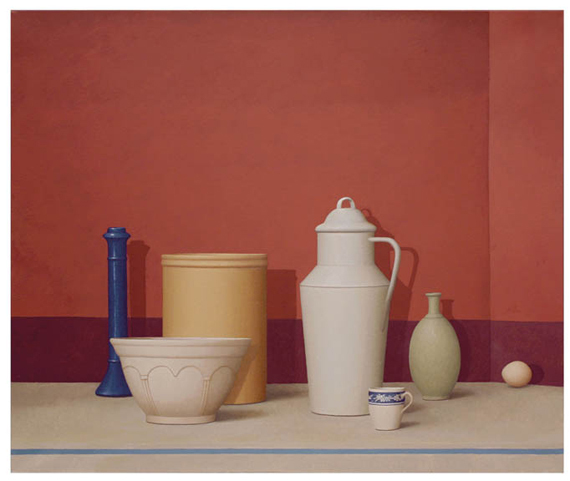
WilliamBailey Soldier 40 x 48 inches oil on canvas 2011
One of the subtleties in his work which has been influential for me is his sophisticated conflation of space. In his still life paintings, for example, there's a presumption of closeness to the objects on a table, the size and scale make them seem just out of reaching distance, but on closer inspection, the perspective of the ellipses tell you that you're much further from what you're looking at. This 'push back' in the drawing simultaneously conveys distance and makes the paintings a more plausible part of the space the viewer occupies, which is what I like about it as well, it's the opposite of the sort of fisheye perspective that can remind you that what you're looking at is a 'picture of something'.

